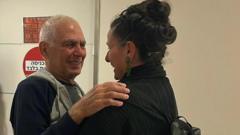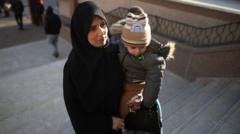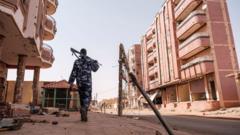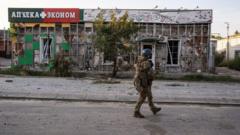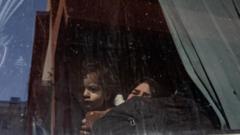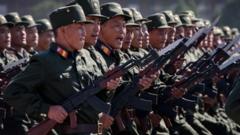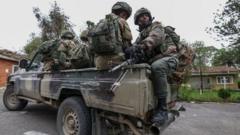Following recent ceasefires, residents of Gaza grapple with the aftermath of destruction, courageously planning to rebuild their lives and fulfill the dreams of loved ones lost. This tale of perseverance highlights the emotional and physical scars that will shape their future.
"Resilience Amid Ruins: Gazans Seek to Rebuild Dreams After Devastation"
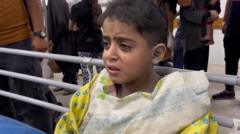
"Resilience Amid Ruins: Gazans Seek to Rebuild Dreams After Devastation"
Amid the ruins of Gaza, survivors like Hatem Al-Atar and young Amr al Hindi strive to fulfill lost dreams, displaying an unwavering spirit in the face of overwhelming adversity.
In the midst of a war-torn landscape, the echoes of resilience resonate loudly in Gaza. Among the countless souls affected, 25-year-old Hatem Al-Atar emerges as a symbol of bravery, driven by the haunting memories of those lost. "Every second in this war was hard. You could lose your life or a beloved one any second," he reflects, drawing strength from the rubble of his former neighborhood in Deir al-Balah.
For Hatem, the devastation is personal. Struck by tragedy when he learned of his father's death amid the bombings, he resolutely continued his work with the civil defense team, plunging into the remnants of buildings to search for survivors and recover bodies. Each day was a fight against despair as he survived close calls, including a harrowing incident where an explosion nearly claimed his life while he attempted to rescue others in need.
However, the aftermath of crisis has provided a flicker of hope. With a ceasefire finally in place, Hatem aspires to pursue his education and dreams of marriage. "With the deal, I should think of what to do next. I will pursue my university study once universities are back in business," he shares, imagining a future that seemed distant just days before.
Gaza's landscape is marked by acceptance and mourning, as families begin to return to once-familiar streets now lined with destruction. Professor Jumaa Abu Shiha laments the loss of his once cherished home. "I can't find a house, I can only see destruction," he says, introducing a painful reality in the quest for stability. His family, like countless others, must navigate the overwhelming task of rebuilding lives against substantial odds.
Amidst these ruins, humanitarian efforts are mobilizing. Aid trucks deliver essential support to nearly two million internally displaced individuals, while local agencies persistently call for more assistance. The scars woven into the fabric of Gaza's population will demand not only material aid but also mental health resources to address spiraling trauma among children and families.
Amr al Hindi, a poignant figure among the survivors, represents the hope snuffed out for feisty children. A mere ten years old, he was the sole survivor of an attack on his family home. Now living with his grandparents, he expresses a desire to pursue the dreams of his deceased brother. With tears rolling down his cheeks, he shares a heart-wrenching ambition: "I wish to become like Ali. I want to fulfil his dream and travel to Jordan to become a doctor."
The stories unfolding in Gaza are not just about destruction; they reveal profound resilience and dreams that refuse to dim. As Hatem, Amr, and countless others seek to rebuild their lives, they acknowledge the various battles each survivor faces—not only against the physical void of war but also the emotional turmoil that lingers long after the last explosion. There are wars that end, yet some continue to rage on inside the hearts of those left behind.


